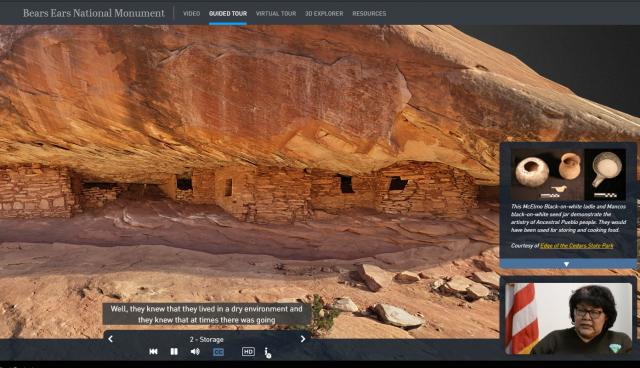Bears Ears National Monument
Remember your OUTDOOR ETHICS when enjoying your public lands. Please RECREATE RESPONSIBLY.
Help Shape the Future of Bears Ears National Monument
Comments on the draft resource management plan are being accepted until June 11, 2024. Visit the BLM's NEPA register for more information.
Overview
Bears Ears National Monument, co-managed by the Bureau of Land Management Monticello Field Office, the Manti La Sal National Forest, and the five Tribes of the Bears Ears Commission, is an outstanding landscape with extensive cultural and natural resources. Every year, visitors to Bears Ears National Monument enjoy many recreation activities, including hiking, backpacking, rock climbing, river rafting, and riding off highway vehicles. However you choose to enjoy your visit to this area, remember to visit with respect, leave no trace, and know before you go. There are three main Bureau of Land Management areas where you may consider recreating within Bears Ears National Monument:
Indian Creek
Indian Creek is a scenic corridor along Highway 211 where visitors can enjoy a number of recreational activities. Climbers flock to this area in the spring and fall to test their skills on some of the best crack climbing routes in the country. Bird watchers keep their eyes peeled for raptors like Golden Eagles and Peregrine Falcons, which make their homes on Indian Creek’s sheer, dramatic cliffs. Campers settle into one of the area’s three designated campgrounds or find a dispersed site to enjoy an evening under the dark skies of southeastern Utah.
Cedar Mesa
Cedar Mesa and Comb Ridge are large landforms located in the southern portion of Bears Ears National Monument. These areas contain many cultural resources, which draw the attention and admiration of many recreationists. Backpackers and day hikers alike enjoy rugged routes through the deep gorges of Grand Gulch and the many canyons within Comb Ridge. Visitors may stop by Kane Gulch Ranger Station to chat with rangers, plan their trip, validate permits, and learn more about this special place. If you’re planning on backpacking or day hiking in this area, keep in mind that you may need a permit or pass to do so.
San Juan River
The San Juan River winds through some of the most spectacular views in canyon country, abound with natural and cultural resources. Boaters enjoy the San Juan River by raft, kayak, stand-up paddleboard, or packraft! A permit is required to float on the San Juan River year-round, including permits issued by lottery for launch dates from April 15th through July 15th. During the rest of the year, permit reservations can be made on recreation.gov.
Virtual Site Tour
The BLM partnered with Cyark to develop a virtual tour of House on Fire and Mule Canyon in Bears Ears National Monument.
Phone
Activities
Geographic Coordinates
Directions
The nearest communities are Monument Valley, Mexican Hat, Bluff, Blanding, and Monticello. Highways 191, 211, 95, 261, and 163 all provide access to portions of Bears Ears National Monument.
Major commercial airlines serve Salt Lake City and St. George, Utah; Grand Junction, Colorado; and Las Vegas, Nevada. Commercial airlines also serve Moab, Utah as well as Durango and Cortez, Colorado.


